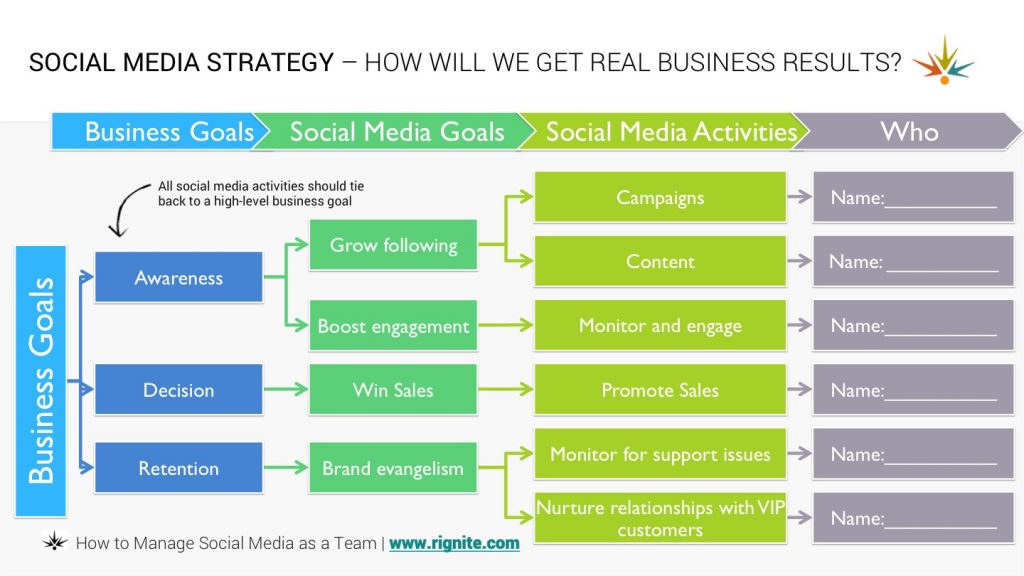Unlocking the Secrets of Successful Selling
Selling unwanted items can be a great way to declutter your home and generate some extra income. With the rise of online marketplaces and social media, it’s never been easier to turn your unwanted items into cash. However, to be successful, you need to know how to sell things and make money. In this article, we’ll provide a comprehensive guide on how to sell your items effectively, from identifying your most valuable items to scaling your sales for long-term success.
Whether you’re looking to make some extra money on the side or start a full-time business, selling items can be a lucrative venture. With the right strategies and techniques, you can turn your unwanted items into a steady stream of income. But where do you start? The key to successful selling is to understand what items are in demand, how to price them competitively, and how to market them effectively.
By following the tips and strategies outlined in this article, you’ll be able to unlock the secrets of successful selling and start making money from your unwanted items. Whether you’re selling online or offline, we’ll show you how to create effective listings, market your items, and negotiate with buyers. With the right approach, you can turn your unwanted items into a profitable business and start achieving your financial goals.
So, if you’re ready to learn how to sell things and make money, keep reading. We’ll take you through the process step-by-step, from identifying your most valuable items to scaling your sales for long-term success. With our expert guidance, you’ll be able to turn your unwanted items into a steady stream of income and start achieving your financial goals.
Identifying Your Most Valuable Items: A Step-by-Step Guide
When it comes to selling items, identifying your most valuable items is crucial to making a profit. To do this, you need to research market demand, assess the condition of your items, and determine their pricing. By following these steps, you can ensure that you’re selling your items for the best possible price and maximizing your earnings.
Researching market demand is the first step in identifying your most valuable items. Look for items that are in high demand and have a strong market presence. You can use online tools such as Google Trends or eBay to see what items are currently popular and in demand. Additionally, you can check out local thrift stores, garage sales, or flea markets to see what types of items are selling well.
Once you’ve identified items that are in demand, it’s time to assess their condition. The condition of an item can greatly impact its value, so it’s essential to be honest about the item’s condition when pricing it. Consider factors such as the item’s age, rarity, and any damage or wear and tear it may have.
Determining the pricing of your items is also crucial to making a profit. You can use online pricing guides or consult with experts in the field to determine the value of your items. Additionally, you can research what similar items are selling for online or in local stores to get an idea of their value.
Some popular items to sell include electronics, furniture, and collectibles. Electronics such as laptops, smartphones, and tablets are always in high demand, and can be sold for a good price. Furniture, such as gently used sofas, beds, and tables, can also be sold for a profit. Collectibles, such as coins, stamps, and sports memorabilia, can be highly valuable and are often sought after by collectors.
By following these steps and identifying your most valuable items, you can ensure that you’re selling your items for the best possible price and maximizing your earnings. Remember to stay up-to-date with market trends and adjust your pricing accordingly to ensure that you’re always getting the best price for your items.
Choosing the Right Sales Platform: Online Marketplaces, Garage Sales, and More
When it comes to selling items, choosing the right sales platform is crucial to reaching potential buyers and making a profit. With so many options available, it can be overwhelming to decide which platform to use. In this section, we’ll explore the different sales platforms available, including online marketplaces, garage sales, and consignment shops, and provide tips on how to choose the best one for your items.
Online marketplaces like eBay, Amazon, and Facebook Marketplace are popular options for selling items. These platforms offer a wide reach and can help you connect with potential buyers from all over the world. However, they often charge fees for listing and selling items, and can be competitive. To succeed on these platforms, you’ll need to create effective listings, including high-quality photos and detailed descriptions, and be prepared to negotiate with buyers.
Garage sales and yard sales are another option for selling items. These events allow you to sell multiple items at once and can be a great way to get rid of unwanted items quickly. However, they require a lot of planning and effort, and can be weather-dependent. To make the most of a garage sale, be sure to advertise the event in advance, price items competitively, and be prepared to haggle with buyers.
Consignment shops are a great option for selling high-end or specialty items. These shops will sell your items on your behalf and take a commission on the sale price. However, they often have strict guidelines for the types of items they accept, and can be selective about what they sell. To succeed with a consignment shop, be sure to research the shop’s guidelines and fees in advance, and be prepared to provide detailed information about your items.
Other sales platforms, such as Craigslist, Letgo, and Decluttr, offer a range of options for selling items. These platforms can be a great way to reach local buyers and can be less competitive than online marketplaces. However, they often require more effort and planning to succeed, and can be more prone to scams and safety issues.
When choosing a sales platform, consider the fees, target audience, and level of competition. Be sure to research the platform’s guidelines and fees in advance, and be prepared to create effective listings and negotiate with buyers. By choosing the right sales platform, you can increase your chances of selling your items quickly and for a good price.
Creating Effective Listings: Writing Descriptions, Taking Photos, and Setting Prices
When it comes to selling items, creating effective listings is crucial to attracting potential buyers and making a sale. A well-written description, high-quality photos, and competitive pricing can make all the difference in selling your items quickly and for a good price. In this section, we’ll provide guidance on how to create effective listings that showcase your items in the best possible light.
Writing a detailed and accurate description of your item is essential to creating an effective listing. This should include information about the item’s condition, features, and benefits. Be honest about any flaws or defects, and highlight the item’s best qualities. Use keywords that buyers might use when searching for similar items, and make sure to include all relevant details, such as measurements, materials, and colors.
Taking high-quality photos of your item is also crucial to creating an effective listing. Use good lighting, and make sure the photos are clear and well-focused. Show the item from multiple angles, and include photos of any flaws or defects. Consider using lifestyle photos that show the item in use, or photos that highlight the item’s features and benefits.
Setting competitive prices is also essential to creating an effective listing. Research similar items to determine a fair and competitive price, and be prepared to negotiate with buyers. Consider offering discounts or promotions to attract more buyers, and be flexible with your pricing to ensure a sale.
In addition to writing a detailed description, taking high-quality photos, and setting competitive prices, there are several other tips to keep in mind when creating effective listings. Use attention-grabbing headlines and titles, and make sure to include all relevant keywords. Use bullet points and short paragraphs to make the listing easy to read, and consider adding videos or other multimedia elements to showcase the item.
By following these tips and creating effective listings, you can increase your chances of selling your items quickly and for a good price. Remember to stay up-to-date with market trends and adjust your listings accordingly to ensure that you’re always getting the best price for your items.
Marketing Your Items: Social Media, Advertising, and Networking
Once you have created effective listings and chosen the right sales platform, it’s time to market your items to attract potential buyers. Marketing is a crucial step in the selling process, as it helps to increase visibility, drive traffic, and ultimately, make sales. In this section, we’ll discuss the importance of marketing your items and provide tips on how to use social media, advertising, and networking to reach potential buyers.
Social media is a powerful marketing tool that can help you reach a large audience of potential buyers. Platforms like Instagram, Facebook, and Twitter are ideal for showcasing your items and connecting with buyers. Use high-quality photos and detailed descriptions to showcase your items, and engage with potential buyers by responding to comments and messages.
Advertising is another effective way to market your items. You can use targeted ads on social media platforms or Google Ads to reach potential buyers who are searching for similar items. Make sure to set a budget and track your ad performance to ensure that you’re getting the best return on investment.
Networking is also an important part of marketing your items. Attend local events, join online communities, and connect with other sellers to build relationships and stay up-to-date with market trends. You can also use online marketplaces like eBay and Amazon to connect with potential buyers and promote your items.
In addition to social media, advertising, and networking, there are several other ways to market your items. Consider using email marketing, influencer marketing, or content marketing to reach potential buyers and promote your items. You can also use tools like Google Analytics to track your website traffic and optimize your marketing efforts.
By marketing your items effectively, you can increase your chances of making sales and generating revenue. Remember to stay up-to-date with market trends and adjust your marketing efforts accordingly to ensure that you’re always reaching the right audience.
Negotiating and Closing Deals: Tips for Success
Negotiating and closing deals is a crucial part of the selling process. It’s where you finalize the sale and ensure that both you and the buyer are satisfied with the transaction. In this section, we’ll provide guidance on how to negotiate and close deals, including tips on how to respond to inquiries, handle offers, and finalize sales.
When negotiating with potential buyers, it’s essential to be flexible, professional, and responsive. Respond promptly to inquiries and messages, and be open to negotiations. Consider offering discounts or promotions to attract more buyers, and be willing to compromise on price or terms.
When handling offers, make sure to carefully review the terms and conditions of the sale. Ensure that you understand the buyer’s expectations and requirements, and be prepared to negotiate or walk away if the offer is not satisfactory.
Finalizing sales requires attention to detail and a clear understanding of the terms and conditions of the sale. Make sure to provide clear instructions on payment, shipping, and returns, and ensure that the buyer understands their obligations and responsibilities.
In addition to these tips, there are several other strategies you can use to negotiate and close deals successfully. Consider using psychological pricing, where you price your items at a level that is perceived as a good value by the buyer. You can also use scarcity tactics, where you create a sense of urgency or limited availability to encourage the buyer to make a purchase.
By following these tips and strategies, you can negotiate and close deals successfully, and ensure that both you and the buyer are satisfied with the transaction. Remember to stay calm, professional, and responsive throughout the negotiation process, and be willing to adapt and adjust your approach as needed.
Managing Your Finances: Tracking Sales, Expenses, and Taxes
When selling items, it’s essential to manage your finances effectively to ensure that you’re making a profit and staying compliant with tax laws. In this section, we’ll discuss the importance of tracking sales, expenses, and taxes, and provide tips on how to use tools like spreadsheets or accounting software to stay organized.
Tracking sales is crucial to understanding your revenue and making informed decisions about your business. Use a spreadsheet or accounting software to record each sale, including the date, amount, and type of item sold. This will help you identify trends and patterns in your sales data and make adjustments to your pricing and marketing strategies accordingly.
Tracking expenses is also essential to managing your finances effectively. Record each expense, including the date, amount, and type of expense. This will help you identify areas where you can cut costs and optimize your expenses.
Taxes are a critical aspect of managing your finances when selling items. Ensure that you’re compliant with tax laws by keeping accurate records of your sales and expenses. Use accounting software or consult with a tax professional to ensure that you’re taking advantage of all the tax deductions and credits available to you.
In addition to tracking sales, expenses, and taxes, there are several other financial management strategies you can use to optimize your finances. Consider using a budgeting app or spreadsheet to track your income and expenses, and make adjustments to your pricing and marketing strategies accordingly.
By managing your finances effectively, you can ensure that you’re making a profit and staying compliant with tax laws. Remember to stay organized, keep accurate records, and seek professional advice when needed.
Scaling Your Sales: Strategies for Long-Term Success
Once you’ve established a successful sales strategy, it’s essential to scale your sales over time to achieve long-term success. In this section, we’ll provide guidance on how to diversify your product offerings, expand your marketing efforts, and build a loyal customer base.
Diversifying your product offerings is crucial to scaling your sales. Consider expanding your product line to include complementary items or services that appeal to your target market. This will help you attract new customers and increase average order value.
Expanding your marketing efforts is also essential to scaling your sales. Consider using social media advertising, email marketing, and content marketing to reach new audiences and drive traffic to your sales platform.
Building a loyal customer base is critical to long-term success. Consider implementing a customer loyalty program or offering exclusive discounts to repeat customers. This will help you build trust and loyalty with your customers and encourage them to make repeat purchases.
In addition to these strategies, there are several other ways to scale your sales over time. Consider using data analytics to track your sales performance and identify areas for improvement. Use this data to optimize your pricing, marketing, and sales strategies to achieve maximum ROI.
By scaling your sales over time, you can achieve long-term success and build a sustainable business. Remember to stay focused on your target market, continuously adapt and improve your strategies, and always prioritize customer satisfaction.







